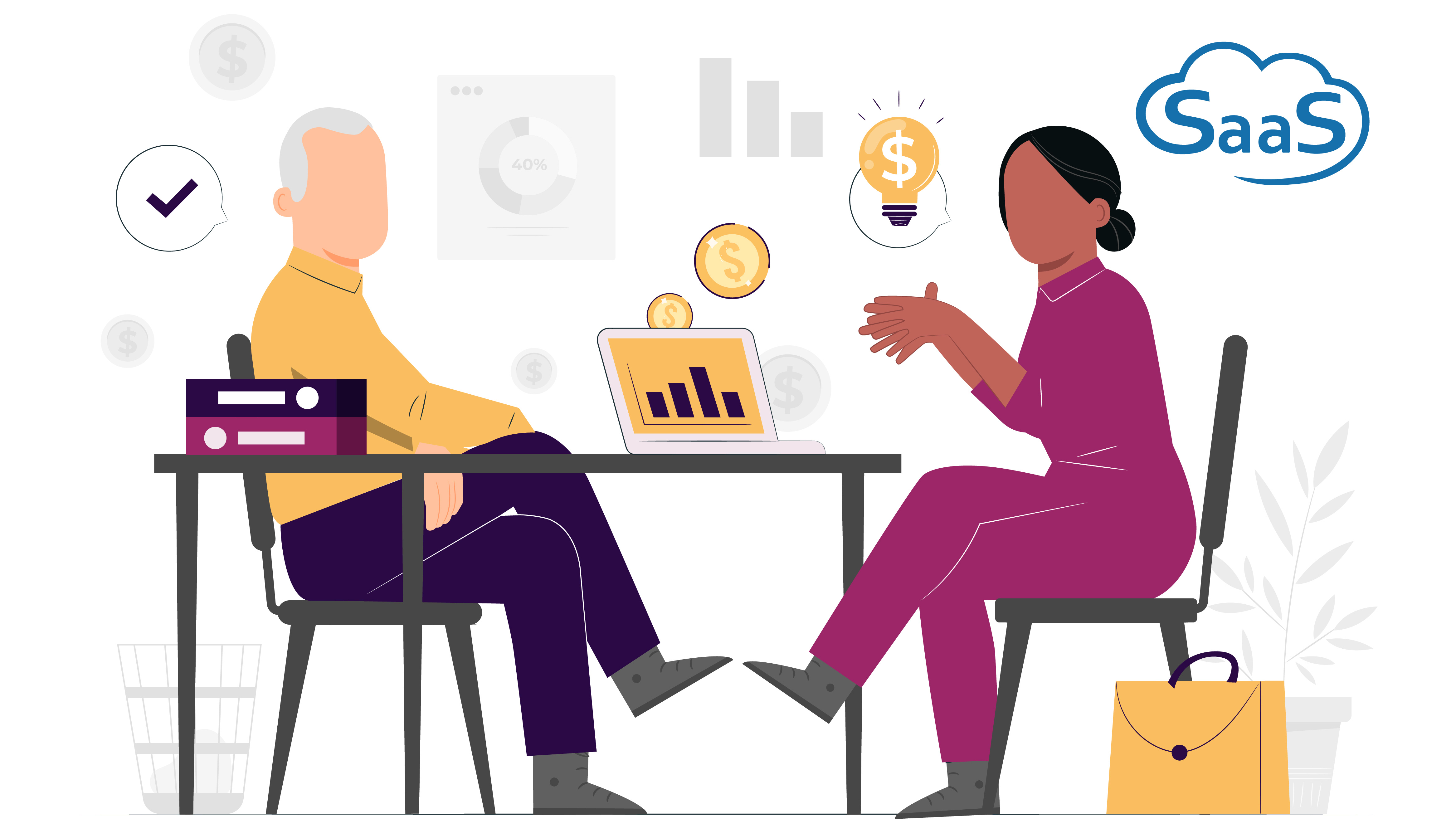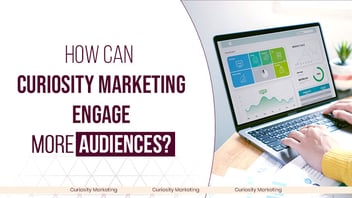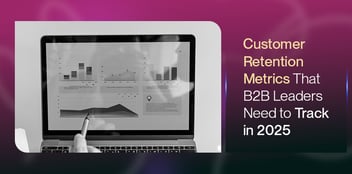
SaaS Customer Acquisition Strategy: Best Approaches For Business Breakthrough
Want effective strategies to attract and retain your Software-as-a-Service (SaaS) customers? Then, we have got you covered.
In the highly competitive world of SaaS, a well-crafted customer acquisition strategy can make all the difference.
Imagine unlocking the secrets to capturing your target audience, increasing conversions, and boosting your revenue.
This guide will delve into proven techniques and cutting-edge approaches to revolutionize your SaaS customer acquisition strategies.
So get ready to supercharge your growth and leave your competitors behind.
See how we are helping Jobiak.ai to 5X their revenue with our hyper target customer acquisition strategy.
What Are Customer Segmentation Types In SaaS?
Before we tell you all about SaaS lead generation, let’s learn three primary types of customer segmentation: trait-based, needs-based, and value-based. Let's explore more about them:

- Trait-based Segmentation: This approach categorizes customers based on their demographic traits, such as:
- Age
- Gender
- Occupation
- Location
- Industry
Trait-based segmentation provides a broad overview of your potential customer base and helps identify patterns and trends among specific groups.
- Needs-based Segmentation: This type of segmentation focuses on customers' specific needs, challenges, or pain points. You get to understand their unique requirements and effectively tailor your SaaS solution to address their problems. Further, you can position your product as a valuable solution before them.
- Value-based Segmentation: This segmentation strategy centers around customers' perceived value and willingness to pay for your SaaS offering. It considers factors like:
- Budget
- Return of Investment (ROI) expectations
- The strategic importance of your solution to their business.
Value-based segmentation helps you align your pricing, features, and messaging with the perceived value your product offers.
What Are The 3 Parts Of The Customer Acquisition Funnel?
The old customer acquisition funnel, also known as the sales funnel, comprises the following lead gen processes:
 The new SaaS Customer Acquisition Strategy is different from the traditional B2B strategy.
The new SaaS Customer Acquisition Strategy is different from the traditional B2B strategy. Now, let's look at the quick brief of common acquisition funnel stages:
Now, let's look at the quick brief of common acquisition funnel stages:
1. Acquire
In this stage of SaaS lead generation, the goal is to attract and acquire potential customers' attention. It involves strategies to increase brand visibility, reach a broader audience and capture demand. You can use tactics such as:
- Paid advertising
- Content marketing
- Social media campaigns
- Cold calling/cold emailing
- Referral programs
- Search engine optimization (SEO)
- Networking via industry conferences or events
- Trade show participation
Prospect responding to your marketing campaign with certain interest level will be deemed as Marketing Qualified Leads (MQLs).
2. Activate
Once potential customers become aware of the brand, they enter the consideration stage. Here, these MQLs start evaluating different options and exploring more about the following:
- Your brand
- Your offerings
- Your product/service's value proposition
You need to provide relevant and valuable content, such as:
- Thought leadership articles
- Social Proofs
- Use cases
- Case studies
- Product demonstrations
- Free Trials
It'll help educate and engage potential customers. The goal is positioning the brand as a viable solution and building trust.
3. Retain
In the decision stage, your potential customers are ready to purchase and become your premium customers. Thus, you can categorise them as Sales Qualified leads (SQLs) or Product Qualified leads (PQLs) in SaaS. They have narrowed down their options and are evaluating the specific details, pricing, and terms of the offerings.
At this point, you must use persuasive tactics to push them ahead in the sales funnel, such as:
- Discounts
- Special offers
- Testimonials
- Reviews
- Product comparisons etc
It'll help to create SaaS demand generation and convince potential customers that your product or service is the best choice. Then, focus on removing any remaining objections. Plus, prioritize motivating the prospect to take the final step and make a purchase.
8 Solid Customer Acquisition Strategies
Below are the top 8 customer acquisition strategies you must know:
1. Identify Target Audience
Determine your target customer base using the following steps:
- Define your product or service and envision your ideal customer or client.
- Compile a list of key attributes that characterize your ideal customers.
- Identify the needs of your potential customers and devise strategies to meet those requirements. Consider asking them questions such as:
- What specific challenges or problems are you currently facing in your [industry/field]?
- What goals or objectives do you hope to achieve in the next [timeframe]?
- How do you currently address or solve the issues you encounter in your [industry/field]?
- What factors are most important to you when considering a [product/service] provider?
- What are your preferred methods of communication and collaboration with a [product/service] provider?
2. Utilize The Suitable Acquisition Channel
Regarding customer acquisition, it's essential to recognize suitable channels among various options. The key lies in identifying the channels that will yield the best results for your specific business. Some of the effective channels are:
- Cold Email Marketing: This channel involves reaching out to potential customers through targeted email campaigns. It allows you to engage with your audience directly, delivering personalized messages, promotions, or updates.
- Events and Industry Trade Fairs: Participating in events and trade fairs related to your industry provides networking opportunities, showcasing your products or services. Additionally, you can build relationships with potential customers.
Such events allow for face-to-face interactions, which can help establish trust and generate leads.
- Referrals: Harnessing the power of referrals involve leveraging satisfied customers to recommend your business to their network.
Ensure to provide excellent products or services and foster strong customer relationships. It'll encourage referrals, often leading to high-quality leads with a higher likelihood of conversion.
- Social Media Advertising: Targeted advertising campaigns on platforms like LinkedIn help you reach a specific audience segment. These channels offer precise targeting options and analytics to measure campaign effectiveness.
- Influencer Partnerships: Collaborating with influencers or industry experts with a significant following in your target market can expose your brand to a wider audience. Influencers can endorse your products or services, generating interest and driving potential customers to your business.
3. Leverage Product-Led Growth (PLG)
Product-led Growth (PLG) is a very SaaS based strategy focusing on driving growth and acquiring customers primarily through the product itself. It emphasizes creating a product that is intuitive, easy to adopt and delivers value to users from the beginning. The growth trajectory of a PLG model looks like this:  To leverage Product-led Growth effectively, consider the following steps:
To leverage Product-led Growth effectively, consider the following steps:
- Product-Centric Approach: Build a user-friendly, self-serve product capable of delivering value independently. Ensure users can easily understand and use the product without extensive onboarding or assistance.
- Free or Freemium Model: Offer a free version or a freemium model of your product. It'll allow users to experience its core functionalities at no cost. Additionally, your potential customers can explore and understand your product's value before purchasing.
- Virality and Network Effects: Make it easy for users to share your product with others. Incorporate features such as:
- Referral programs
- Social sharing options
- Collaborative functionalities that amplify their value when used in a network or group setting
- Self-Service Onboarding and Education: Provide resources, tutorials, and documentation that enable users to onboard themselves and discover the full potential of your product. Invest in creating self-service support channels, such as knowledge bases or interactive tutorials, to help users overcome obstacles.
- Customer Success and Expansion: Focus on ensuring prospects achieve their desired outcomes with your product. Offer personalized support, proactive communication, and value-added features to drive customer satisfaction, retention, and expansion.
4. Develop Strategic Partnerships With Renowned SaaS Partners
One effective customer acquisition strategy is developing partnerships with renowned SaaS partners. By partnering with established SaaS companies in your industry, you can leverage their existing customer base and brand reputation to reach a wider audience.
This strategy allows you to tap into the partner's network and benefit from their credibility, trust, and customer loyalty.
When seeking strategic partnerships, ensure to:
Look for SaaS partners whose products or services complement yours or target a similar customer base. This synergy can create mutual benefits and increase the chances of success.
Collaborate with your partners to develop joint marketing campaigns, co-branded content, or referral programs that incentivize customers to try both of your solutions.
5. Have Customer Testimonials Readily Available
Customer testimonials play a crucial role in pushing MQLs and SQLs to finalize purchases. Positive reviews and feedback from satisfied users can significantly influence potential customers' buying decisions. Thus, you must:
- Collect testimonials from your happy and loyal customers.
- Showcase these testimonials on your website, social media channels, and cold emailing content.
- Ensure the testimonials highlight the specific benefits and results customers have achieved using your product or service.
6. Run Tailored Cold Call/Cold Email Campaigns
Traditional SaaS cold emailing and cold calling are still effective customer acquisition strategies when done right. The key is to tailor your approach and make it personalized and relevant to the recipient. You'll have to take care of the following:
- Craft personalized messages that clearly communicate the value proposition and benefits you can offer.
- Highlight any relevant case studies or success stories to demonstrate your expertise.
- Respect the recipient's time and avoid unnecessarily lengthy conversations or email copies. Instead, provide a clear call to action for your cold call or email.
- Follow up diligently, but avoid being pushy or aggressive. Cold outreach requires persistence, so continuously refine your approach based on feedback and results.
7. Direct Messages To SaaS Decision Makers Via Linkedin
As a professional networking platform, LinkedIn provides an opportunity to connect directly with SaaS decision-makers and influencers. Leveraging this platform can be an effective customer acquisition strategy. Here's how you can go about it:
- Find the key decision-makers in companies that may benefit from using your service/product.
- Craft personalized and concise messages explaining how your offering can solve their specific pain points or improve their business processes.
- Be mindful of being too sales-oriented. Instead, focus on building relationships and offering value.
- Engage with their content, share relevant insights, and participate in industry discussions to establish yourself as a trusted authority.
Important note- When reaching out to potential customers on LinkedIn, ensure your profile is complete, professional, and showcases your expertise. Building a rapport before approaching them directly can increase the chances of a positive response and successful customer acquisition.
8. Join Relevant Social Network Groups
Joining relevant social network groups provides you access to a targeted audience interested in your industry or niche. In fact, you can meet a few sales ready leads through these groups.
In fact, platforms like Facebook, LinkedIn, and industry-specific forums or Slack communities offer groups. Here, professionals discuss industry trends and challenges and seek recommendations.
By actively participating in these groups, you can:
- Establish yourself as an industry expert
- Gain visibility
- Attract potential customers
- Share valuable insights
- Answer questions
- Offer helpful advice without being overly promotional
When appropriate, mention your product or service as a solution to specific challenges discussed within the group.
Remember to respect the group rules and guidelines and avoid spamming or aggressive self-promotion. Building relationships, trust, and credibility within social network groups can lead to customer acquisition through referrals or direct inquiries from interested members.
What Is Customer Acquisition Cost (CAC) In SaaS?
As per a report, the average cost for customer acquisition for a small B2B SaaS financial company is stated to be $1,450. However, for enterprises, the cost escalates significantly to $14,772.
The average cost for customer acquisition differs from company to company. It refer to the financial investment made by your company to persuade customers to purchase your software or service.
This cost encompasses expenses related to sales and marketing efforts, including personnel costs and program expenditures.

Conclusion
An effective strategy in place to get sales ready leads and convert them into customers is vital for a SaaS company to grow and last for a long time. It encompasses a range of tactics and techniques aimed at attracting, converting, and retaining customers.
A well-planned SaaS customer acquisition strategy drives the bottom line, builds prolonged B2B relationships, and boosts your product adoption in the competitive SaaS industry.
You deserve the best SaaS lead generation agency for your business. That's why we are here to offer you a proven and personalized customer acquisition strategy that can scale up your revenue and growth. Don't miss this opportunity to work with us and see the results for yourself. Schedule a call with us today and let's make it happen.




